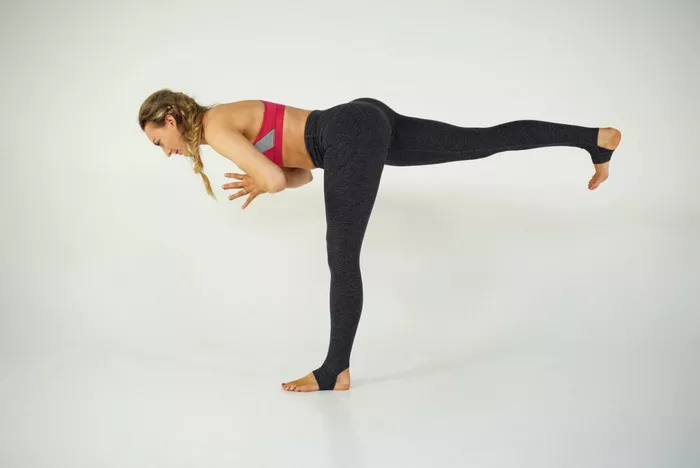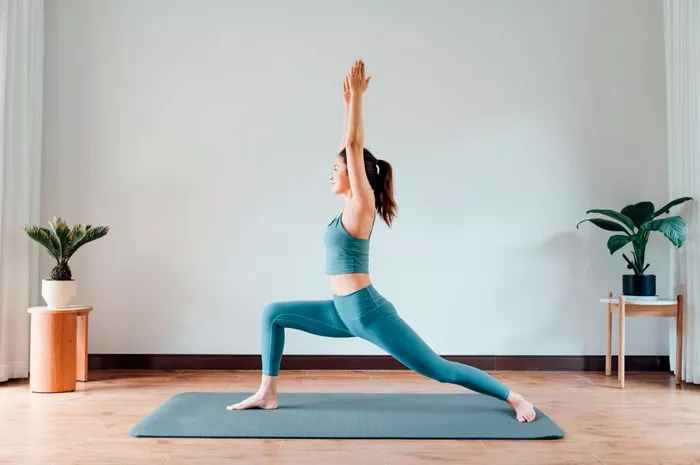Hot yoga has gained significant popularity in recent years due to its unique combination of intense physical postures performed in a heated environment. Typically practiced in rooms heated to around 90-105°F (32-40°C), hot yoga can be a challenging yet rewarding practice for many individuals. But the question remains—is it good to do hot yoga every day? As a yoga instructor with years of experience, I have seen the diverse ways in which yoga impacts the body and mind, and I believe it’s important to take a balanced approach to any practice, including hot yoga.
In this article, we will explore the benefits and potential risks of doing hot yoga daily, as well as how to listen to your body to determine if this practice suits your lifestyle. Let’s take a deeper dive into this hot topic.
What Is Hot Yoga?
Hot yoga is a style of yoga practiced in a heated room designed to induce sweating and increase the intensity of physical postures. The most popular form of hot yoga is Bikram yoga, which consists of a set series of 26 poses and two breathing exercises. However, many modern studios also offer variations of hot yoga that incorporate different sequences and styles, such as vinyasa or power yoga, in a heated setting.
The purpose of practicing yoga in a heated room is to increase flexibility, enhance detoxification through sweating, and raise the body temperature to encourage greater circulation and muscle elasticity. The heat can also make the practice feel more challenging, leading to an increase in calorie burn and endurance over time.
Benefits of Hot Yoga
Before exploring whether it’s good to practice hot yoga every day, let’s first look at some of the potential benefits of doing hot yoga in general.
1. Improved Flexibility
One of the most notable benefits of practicing yoga in a heated room is the increased flexibility it offers. The heat helps to warm up the muscles, which can make them more pliable and open, allowing practitioners to deepen their stretches and improve range of motion. For many, this results in better mobility and less stiffness in both the joints and muscles, particularly in the hips, hamstrings, and spine.
2. Enhanced Detoxification
Sweating is a natural bodily function that helps the body expel toxins and excess waste. Hot yoga encourages sweating, which can lead to improved detoxification. As the body heats up, the pores open, and sweat helps to flush out impurities. This is why many practitioners report feeling rejuvenated and refreshed after a hot yoga session, as it can give a sense of cleansing both physically and mentally.
3. Increased Cardiovascular Endurance
Hot yoga is an intense physical practice, and when done consistently, it can improve cardiovascular endurance. The heat makes your heart work harder to pump blood and oxygen to your muscles, which increases your stamina over time. As your body adapts to the heat, you may notice improved stamina in other physical activities as well.
4. Better Circulation
The heated environment of hot yoga promotes better circulation by raising the heart rate and improving blood flow to the muscles and organs. Better circulation leads to increased oxygen and nutrient delivery to tissues, which can aid in recovery and overall vitality.
5. Mental Clarity and Focus
Like any form of yoga, hot yoga requires concentration and mindfulness. The heat and intensity of the practice challenge the mind to stay focused on the present moment. Over time, this can help cultivate greater mental clarity, reduce stress, and improve focus both on and off the mat. The mental discipline learned in hot yoga can translate into a more balanced and centered state of mind.
6. Calorie Burn and Weight Loss
The intensity of hot yoga can lead to a significant calorie burn, especially when practiced regularly. The heated environment and the physical demands of the poses make the body work harder, which can contribute to weight loss and increased muscle tone. However, it’s important to note that hot yoga should be complemented by a balanced diet and other forms of exercise to achieve sustainable weight loss.
The Risks of Doing Hot Yoga Every Day
While hot yoga offers a range of benefits, it’s also important to consider potential risks when practicing it daily. Every individual is unique, and what works for one person might not work for another. Overdoing any physical activity, especially one as intense as hot yoga, can lead to adverse effects. Here are some of the risks you should be aware of.
1. Dehydration
One of the most significant risks of practicing hot yoga every day is dehydration. The high temperatures in a hot yoga room cause your body to sweat profusely, leading to the loss of water and electrolytes. If you don’t replace these fluids adequately, you could become dehydrated, which can result in dizziness, fatigue, headaches, and muscle cramps. Chronic dehydration can have more severe consequences, including kidney damage or heat exhaustion.
To avoid dehydration, make sure you drink plenty of water before, during, and after your practice. It’s also important to replenish electrolytes by consuming a balanced diet or sports drinks if needed.
2. Heat Exhaustion and Heat Stroke
Practicing yoga in high temperatures can be taxing on the body, especially if you’re not accustomed to the heat. Heat exhaustion occurs when the body becomes overwhelmed by heat and is unable to cool itself effectively. Symptoms include excessive sweating, weakness, nausea, dizziness, and rapid heartbeat. If left unchecked, heat exhaustion can escalate to heat stroke, a life-threatening condition where the body’s temperature rises to dangerous levels.
To reduce the risk of heat-related illnesses, always listen to your body. If you begin to feel lightheaded, dizzy, or overly fatigued, it’s important to stop, rest, and hydrate. Avoid pushing yourself too hard, especially if you’re new to hot yoga.
3. Overuse Injuries
While hot yoga can increase flexibility and improve joint mobility, practicing it every day may lead to overuse injuries. The muscles and joints can become overstretched if you push them too hard without adequate recovery. Over time, this can result in strains, sprains, or stress fractures. Additionally, repetitive movements in certain poses can lead to chronic pain or discomfort.
To avoid overuse injuries, it’s essential to incorporate rest days into your routine. Giving your body time to recover and heal is crucial for maintaining long-term health and preventing injury.
4. Elevated Blood Pressure
For individuals with pre-existing heart conditions or high blood pressure, the intense heat of a hot yoga session can place additional stress on the cardiovascular system. The elevated heart rate and blood pressure caused by the heat may exacerbate existing conditions and lead to further health complications.
If you have a history of heart disease or hypertension, it’s important to consult with a healthcare professional before engaging in hot yoga. They can help assess whether it’s a safe practice for you and suggest any necessary modifications.
5. Mental Fatigue
While yoga is known for its mental benefits, practicing hot yoga every day can also lead to mental burnout. The intensity of the heat combined with the physical demands of the practice can leave you feeling mentally exhausted. Over time, this mental fatigue can diminish your enjoyment of the practice and lead to feelings of irritability or stress.
To avoid mental burnout, it’s important to balance your practice with relaxation and restorative activities. Meditation, deep breathing, and other forms of relaxation yoga can help counterbalance the intensity of hot yoga.
How Often Should You Do Hot Yoga?
The answer to whether it’s good to practice hot yoga every day depends on your individual goals, fitness level, and overall health. While some advanced practitioners may be able to handle daily hot yoga sessions, most individuals benefit from incorporating rest days into their routine. Here’s a general guideline for how often you should practice hot yoga:
1. Beginners
If you’re new to hot yoga, it’s best to start with 2-3 sessions per week. This allows your body to acclimate to the heat and intensity of the practice without overwhelming it. As you become more experienced and your body adapts, you can gradually increase the frequency.
2. Intermediate Practitioners
For individuals with some experience in yoga, 3-4 sessions per week is generally a good frequency. This provides enough time for the body to build strength and flexibility while still allowing for rest and recovery.
3. Advanced Practitioners
Advanced practitioners with a strong yoga foundation may be able to practice hot yoga 5-6 times a week, but it’s important to listen to your body and adjust based on how you feel. Incorporating restorative practices such as yin yoga or meditation on off-days can help balance the physical demands of hot yoga.
Conclusion
In conclusion, hot yoga can offer a variety of benefits, from enhanced flexibility and improved cardiovascular endurance to increased mental focus. However, doing hot yoga every day may not be appropriate for everyone. The intensity of the practice, combined with the heat, can lead to dehydration, heat exhaustion, and overuse injuries if done excessively.
It’s crucial to listen to your body and take rest days to allow for recovery. Hydration, proper nutrition, and paying attention to your physical and mental state are all key components of a successful hot yoga practice. Whether you choose to practice hot yoga every day or a few times a week, it’s important to find a routine that aligns with your goals and promotes long-term health and well-being.
As with any form of exercise, moderation is key. By approaching hot yoga mindfully and respecting your body’s limits, you can enjoy its many benefits while minimizing the risks.
Related Topics:


















